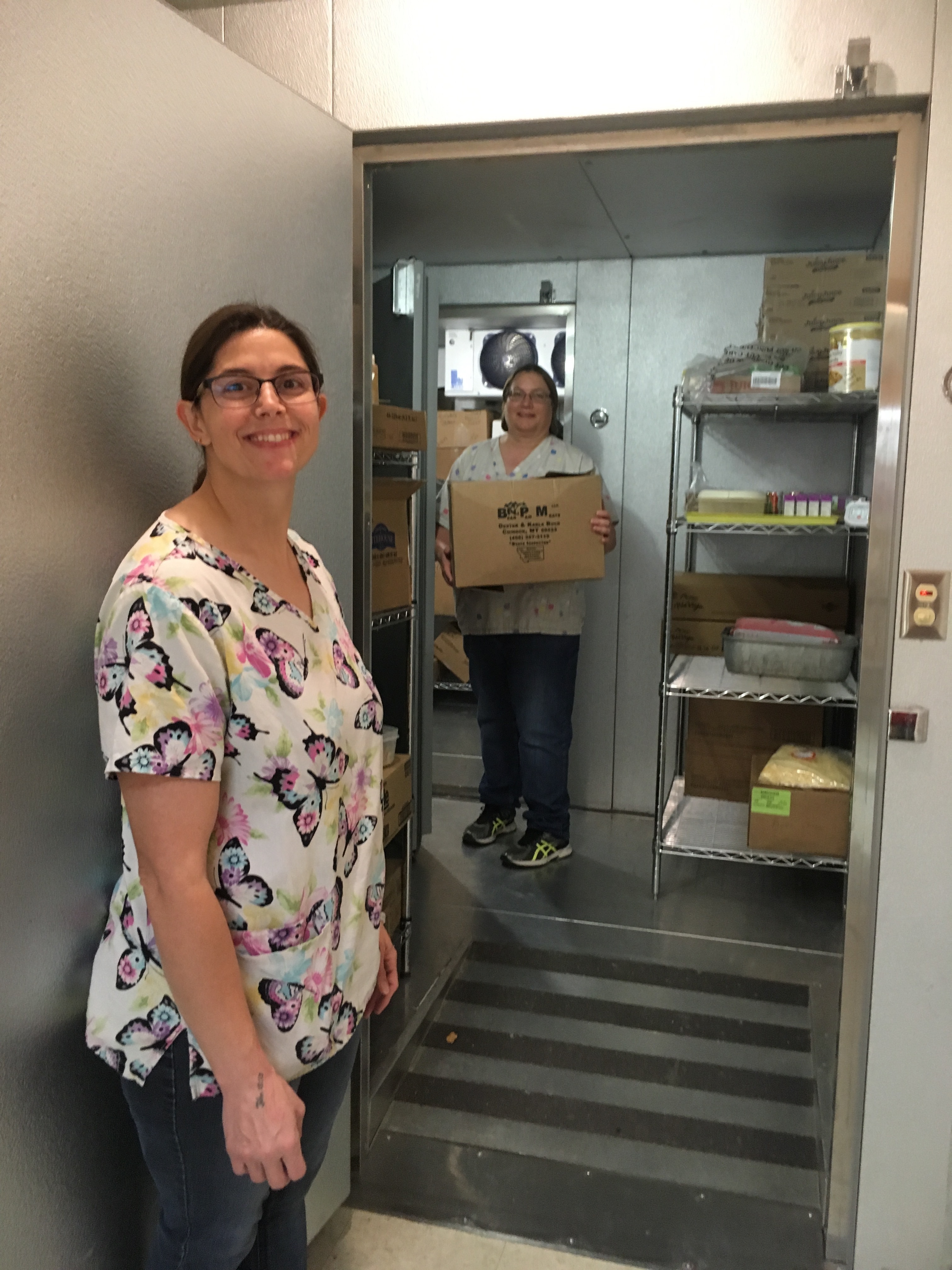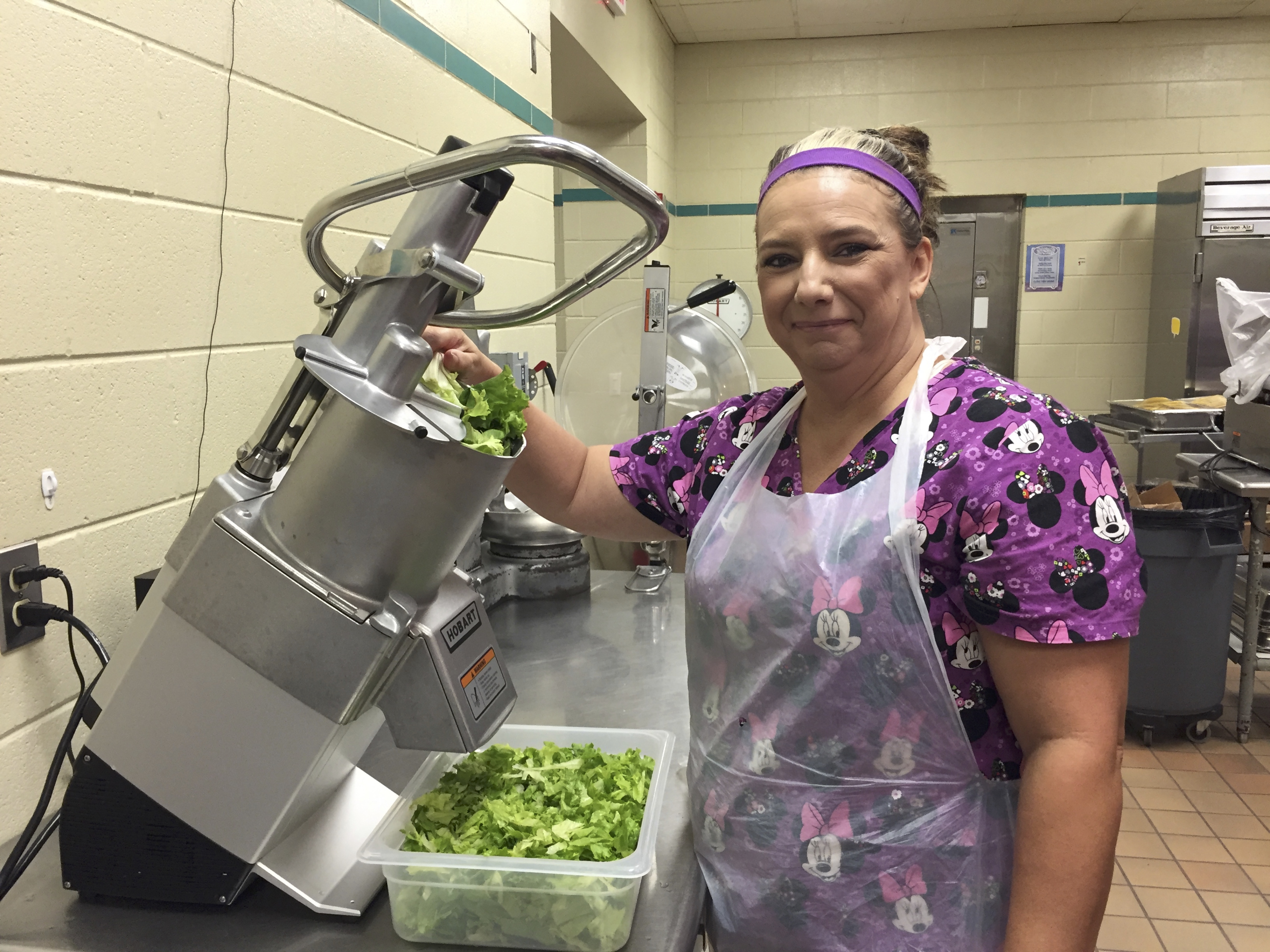
Getting the Right Tools for the Job
How one piece of equipment makes big impact
May 09, 2018 | By Emily Gallivan
While working to serve better meals in schools, food service programs face a wide range of challenges. One of the biggest needs is equipment to ensure food is properly stored, cooked, cooled, and transported. This equipment can be costly for schools to procure and maintain. If schools want to prepare meals using ingredients like fresh greens, vegetables, whole grains, raw proteins, and dried legumes, they must have the right tools for the job. And when schools have the proper equipment, all kinds of positive results emerge.
Equipment used in school kitchens is often very different than what you might find in an average home kitchen. School districts require equipment that can handle much larger quantities of food such as industrial-sized food processors, walk-in refrigerators, tilting braising pans, and various types of ovens. When schools purchase new equipment to support their programs they can boost staff efficiency, increase student participation, reduce staff stress, and even increase their ability to purchase local ingredients and expand menus. This blog highlights how 5 districts were able to up the ante in their food service department thanks to new kitchen equipment.
At St. Tammany Parish in Covington, Louisiana, a new food processor means staff can now chop more fresh vegetables faster and more uniformly. The rotisserie ovens at Riverside Unified School District in California enable staff to “set it and forget it.” Staff can load up to 35-40 whole chickens for the district’s middle and high schools and leave the ovens to do the work while they prepare other dishes.
The ovens also provide an additional benefit that is a testament to the power of providing high quality food to students every day: the smell of freshly cooked food! Students love the home-cooking aromas that flood the lunchroom when those ovens are working. Nutrition Services Interim Director Kirsten Roloson, reported that students, “feel like they are important and that we care about them.” The time and effort staff put into their meals really show students that they are valued and that someone cares.
Similar to the new food processor in Louisiana and the ovens in California, a new soak sink at Dallas Independent School District in Texas increased their ability to wash fresh lettuce for salads. With their increased efficiency, Dallas Independent increased their power to purchase local ingredients and now sources greens from local hydroponic farmers.
Hinsdale Public Schools in Montana also increased their local purchases when they solved a stressful workplace problem: their equipment was terribly unreliable. As a result, extra work was needed to monitor the equipment, even when school was not in session. This problem was solved with the purchase of a new walk-in cooler/freezer. With a new walk-in cooler/freezer, staff are confident about the quality of the food they are serving and don’t have to worry about food spoiling or equipment breaking down in the middle of service. Their cooler/freezer shut the door on workplace stress and opened doors to stocking up on local ingredients. They now serve 100% local beef and pork. And the best part? They cut down on food waste! Instead of throwing away left-over meat, they now store it in their new cooler/freezer and use it in soups and stews.
New, fully-functional equipment can also help drive program participation. When schools have to cook with inadequate or dysfunctional equipment, they are forced to serve lower quality food that is unappetizing to students, and participation rates drop. Mountain View Whisman School District in California faced this problem due to poorly functioning ovens. With new ovens that cook food consistently, their food has more flavor and is visually appealing to students. The new equipment has also allowed the district to expand their menu to include omelet egg rounds, roasted meats, and pasta dishes.


Hinsdale Public Schools in Montana also increased their local purchases when they solved a stressful workplace problem: their equipment was terribly unreliable. As a result, extra work was needed to monitor the equipment, even when school was not in session. This problem was solved with the purchase of a new walk-in cooler/freezer. With a new walk-in cooler/freezer, staff are confident about the quality of the food they are serving and don’t have to worry about food spoiling or equipment breaking down in the middle of service. Their cooler/freezer shut the door on workplace stress and opened doors to stocking up on local ingredients. They now serve 100% local beef and pork. And the best part? They cut down on food waste! Instead of throwing away left-over meat, they now store it in their new cooler/freezer and use it in soups and stews.
New, fully-functional equipment can also help drive program participation. When schools have to cook with inadequate or dysfunctional equipment, they are forced to serve lower quality food that is unappetizing to students, and participation rates drop. Mountain View Whisman School District in California faced this problem due to poorly functioning ovens. With new ovens that cook food consistently, their food has more flavor and is visually appealing to students. The new equipment has also allowed the district to expand their menu to include omelet egg rounds, roasted meats, and pasta dishes.
When districts have the ability to purchase kitchen equipment, food service programs can incorporate more scratch cooking into their operations, and the impact of one single purchase extends throughout school food operations. Schools increase their ability to make local purchases and make their workplaces less stressful and more efficient. They can also serve better food and expand their menus, which means students are eating more freshly roasted produce, locally braised meats, and produce from colorful salad bars. As a 2013 PEW Charitable Trusts study pointed out, “schools would be better able to serve meals that meet nutrition requirements if investments were made in new equipment.” And these stories from school districts across the country show just that. Equipment might be only one factor schools need to consider as they incorporate more fresh and whole ingredients into their menus, but it is an essential component with far-reaching impacts.
Photos Courtesy of Riverside Unified School District, Hinsdale Public Schools and St. Tammany Parish School District
Resource:


When districts have the ability to purchase kitchen equipment, food service programs can incorporate more scratch cooking into their operations, and the impact of one single purchase extends throughout school food operations. Schools increase their ability to make local purchases and make their workplaces less stressful and more efficient. They can also serve better food and expand their menus, which means students are eating more freshly roasted produce, locally braised meats, and produce from colorful salad bars. As a 2013 PEW Charitable Trusts study pointed out, “schools would be better able to serve meals that meet nutrition requirements if investments were made in new equipment.” And these stories from school districts across the country show just that. Equipment might be only one factor schools need to consider as they incorporate more fresh and whole ingredients into their menus, but it is an essential component with far-reaching impacts.
Photos Courtesy of Riverside Unified School District, Hinsdale Public Schools and St. Tammany Parish School District
Resource:







